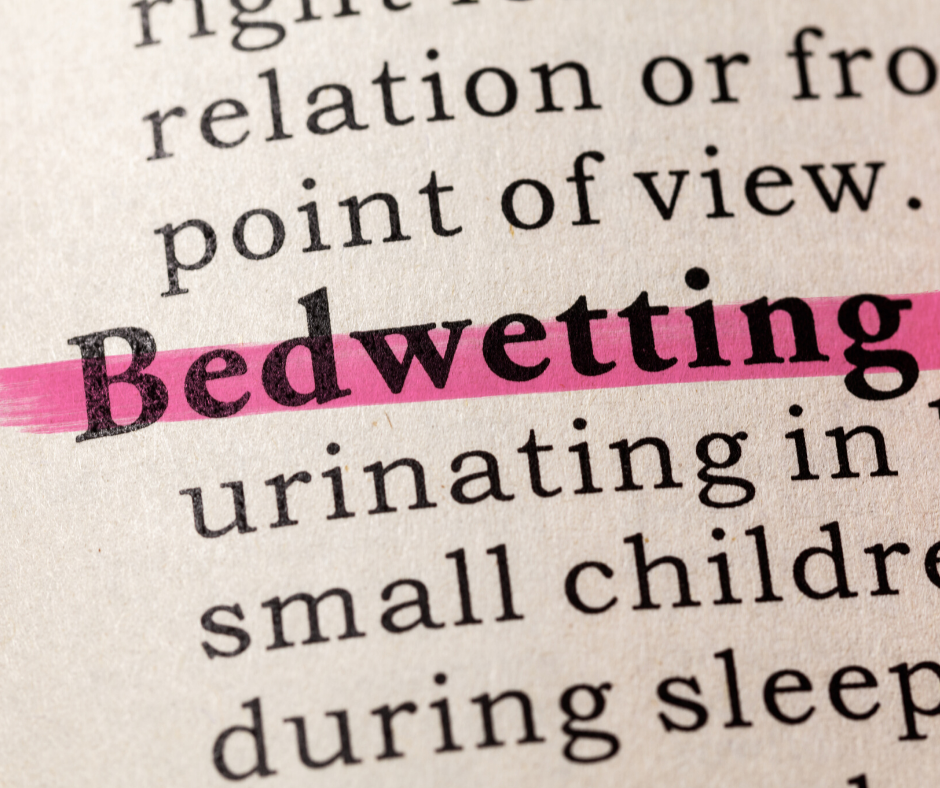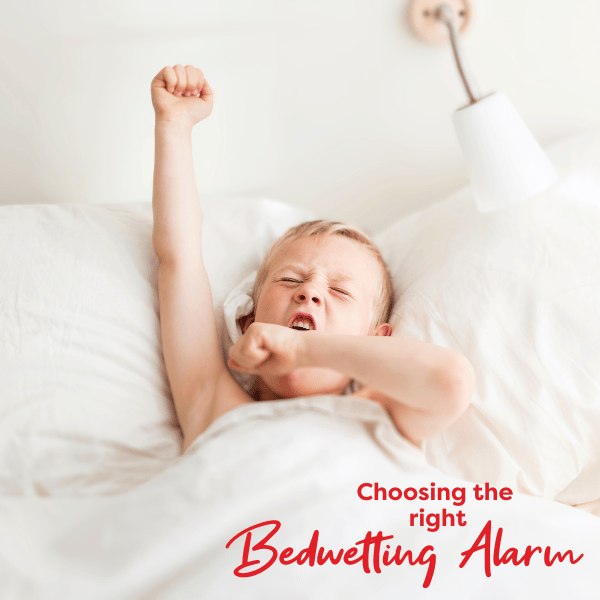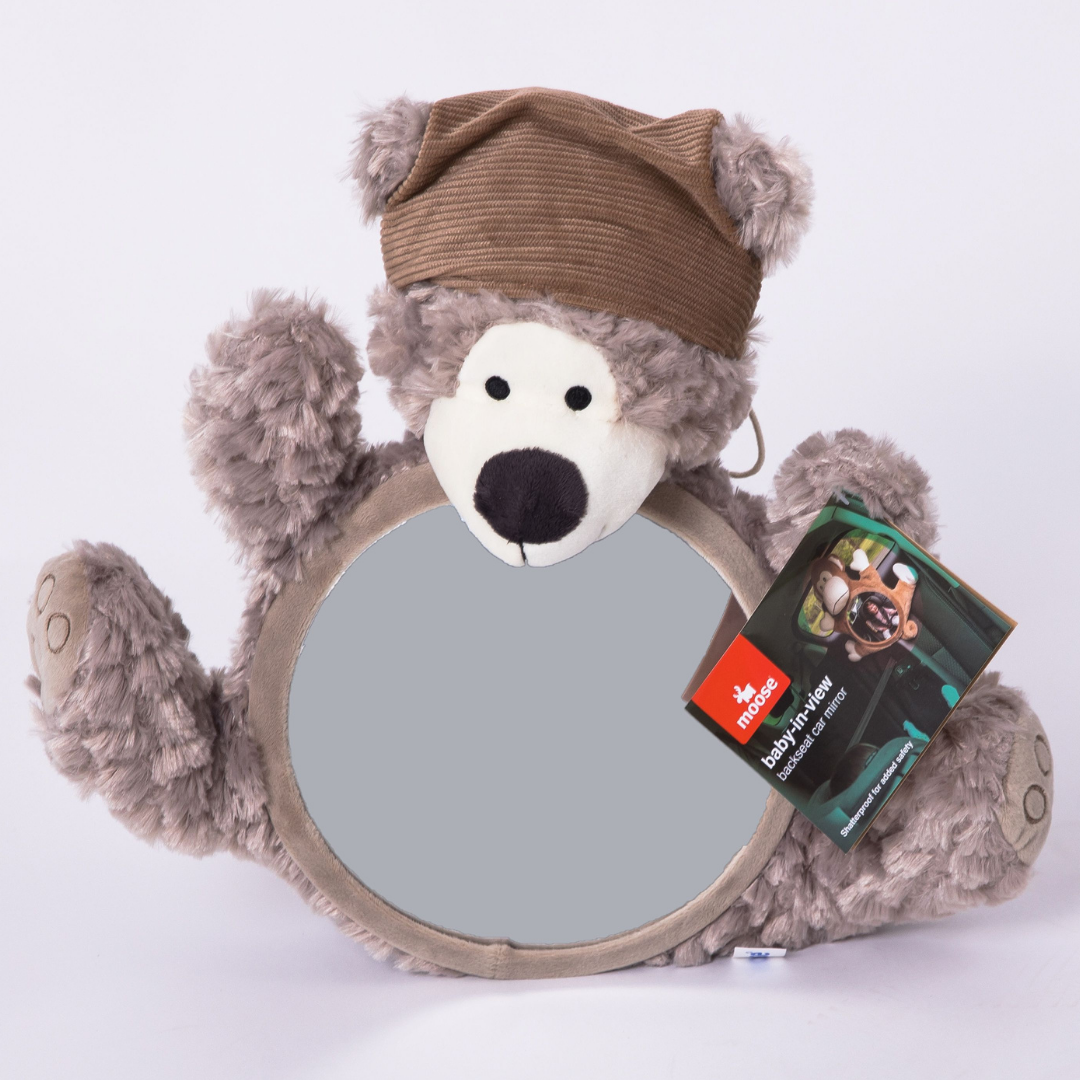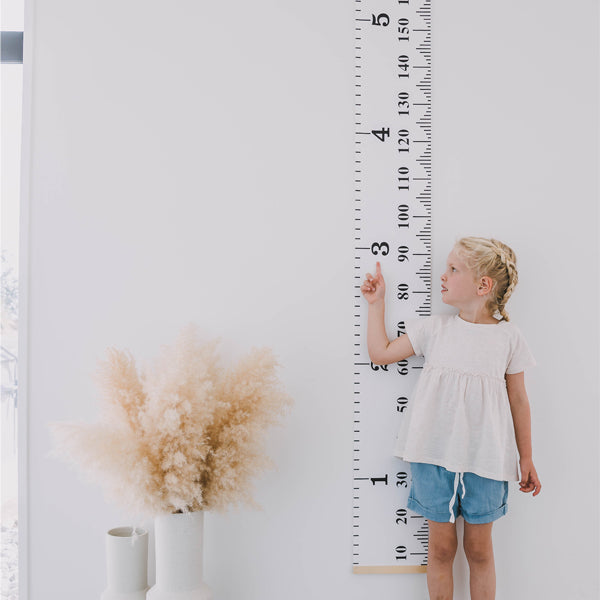Research shows bedwetting alarms are the most useful and successful tool to treat bedwetting. Studies suggest alarms will help 80 per cent of children to become dry, and the majority of children will then stay dry.
How does a bedwetting alarm work?
Different alarms work in slightly different ways but essentially a sensor detects wetness, which then activates an alarm (which vibrates and/or sounds) to wake your child. Eventually the alarm conditions the brain to wake up before any accidents happen at all. The time is takes to ‘train the brain’ and stop wetting varies from child to child, but for some children they become dry within 10 days, other children can take much longer.
Choosing the right bedwetting alarm
There are three types of bedwetting alarms:
#1 Wearable Bedwetting Alarms
With a wearable alarm, the child places the moisture sensing device in his or her pyjamas or underwear (in the line of fire). When the child wets, the sensor detects the wetness and the alarm is sounded. The sensor is attached to a cord at one end and the alarm/unit at the other end. The unit attaches to the pyjama top. With this alarm your child can use a waterproof bed pad.
Recommended: At Moosebaby we offer two types of wearable alarms. The Rodger Amigo is a good cost-effective alarm which provides you with the option of a sound and/or vibration alarm to wake your child. Because you can turn off the sound and use the alarm on vibration only, it is useful for daytime toilet training as it offers discretion. The other type of alarm we offer is the WetStop3 which has been used successfully for over 40 years! It is also a good cost-effective alarm.
#2 Bed-and-Pad Bedwetting Alarm
With an ‘alarm-and-pad’ bedwetting alarm, the moisture sensor is sewn into the pad placed beneath the sleeper. The sewn-in sensors in the pad detect moisture and the alarm sounds.
There are a number of bed and pad alarms on the market and the price varies considerably.
#3 Wireless Bedwetting Alarm

The third type of bedwetting alarm, the wireless alarm, is the newest technology on the market. The child wears special underpants (available in all sizes) which have sewn in sensors.
The added advantage of this alarm over others is that moisture is detected immediately thereby triggering the alarm to sound immediately to wake the child.
This alarm is comfortable to wear as no cords or cables are involved. A small transmitter is attached to the underpants and a base unit is plugged into a power point (or powered by battery).
Another advantage of this alarm is that if you have a particularly deep sleeper or you have a child who shares a room, then a vibrating unit (Bed-Shaker) can be attached to this unit so vibration is used to wake your child. Lastly, a separate base unit can be purchased to place in the caregiver’s room so mum or dad can also hear the alarm sound.
Recommended: Rodger Wireless Bedwetting Alarm
|
Alarm |
Type |
Alarm Type |
Useful for |
Advantages |
|
Wearable alarm with clipped on sensor and cord |
Sound and vibration |
Children |
Cost effective. 6 varying alarm tones plus vibration alert. Choose the best setting for your child. Lightweight & comfortable. Efficient on battery power. Effective for day or night-time training. Can use on vibration-alarm mode only to allow for discretion. Proven success (sold since 1979). |
|
|
Wearable alarm with clipped on sensor and cord |
Sound and/or vibration |
Children Adults Special Needs Daytime Toilet Training |
Cost effective. Lightweight & comfortable. Clean, modern, European-design. Effective for day or night-time training. Can use on vibration-alarm mode only to allow for discretion. A selection of alarm sounds & volume settings. |
|
|
Wearable sensor underpants with transmitter. Base unit plugged into wall. |
Sound |
Children Adults Special Needs |
Latest technology. Comfortable – sewn-in sensor underpants. No cords. Moisture detected immediately. Vibrating Bed Shaker attachment available. Second base unit for parent’s room available. |
Bedwetting alarms best practices
- Choose the right time. Choose times when routines are not interrupted too much.
- Talk to your child about how the alarm works and help him get prepared each night (spare pyjamas, night light, change of underpants/bed pad).
- Make setting the alarm part of your everyday bedtime routine.
- Do not skip nights.
- Be POSITIVE! Give plenty of encouragement and stay confident and positive along the way.
- Work on daytime toilet habits too. Encourage regular fluid and toilet stops throughout the day.
- Avoid using nappies or pull-ups—your child should feel the wetness.
- For some children it takes time before they wake to the sound of the alarm. Be patient & assist your child with waking when the alarm sounds. With time they will wake by themselves.
- Remain PATIENT throughout the process. Some children become dry within days, others take weeks.
As you continue to use the alarm every night the number of dry nights will begin to outnumber the wet ones. However, during the training process, expect the occasional accident to occur. This is normal as your child’s body develops.










